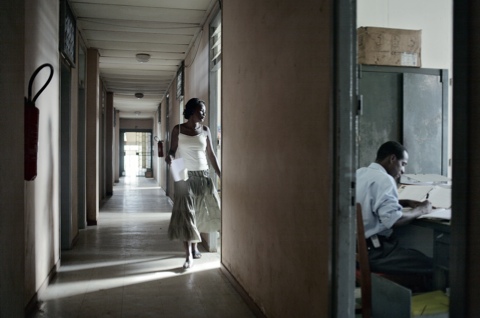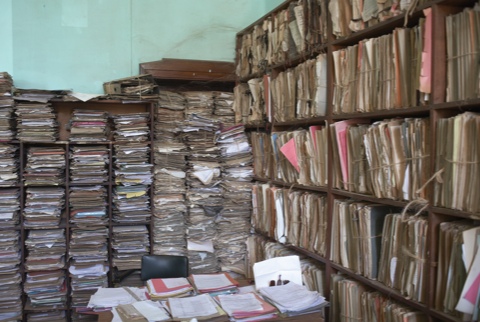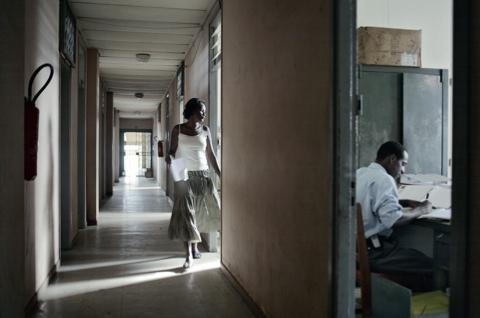
In Collection: Guy Tillim in collection Huis Marseille, Amsterdam
From the series: Avenue Patrice Lumumba, DR Congo, 2007
About the series Avenue Patrice Lumumba:
In his project Avenue Patrice Lumumba (2007-08), South African artist Guy Tillim (b. 1962) records the architecture and infrastructure of colonial and postcolonial Africa. Patrice Lumumba (1925-61) was one of the first elected African leaders in modern times. In 1960 he became the first prime minister of the Democratic Republic of the Congo after his country won independence from Belgium. Only ten weeks after his speech at the independence celebrations, in which he listed various injustices and human rights violations implemented by the Belgians, Lumumba’s government was deposed in a coup. He was imprisoned and murdered in circumstances suggesting the complicity of the governments of Belgium and the United States.

Tillim seeks not only the action and drama typical of a journalistic approach, but also quieter scenes, allowing his work to straddle the media and fine art worlds.

Lumumba became revered as a liberator of independent Africa, and streets that bear his name in western and southern Africa have come to represent both the idealism and decay of an African dream. Originally a photojournalist, Guy Tillim has spent a large part of his career documenting social conflict in Africa for media agencies including Reuters and Agence France-Presse. Yet Tillim seeks not only the action and drama typical of a journalistic approach, but also quieter scenes, allowing his work to straddle the media and fine art worlds. His images from the series Congo Democratic (2006) of the Congolese election, for example, were shown in Documenta 12 and also appeared in Congolese daily newspapers.
In Avenue Patrice Lumumba, Tillim avoids intense action entirely, and instead focuses on the architecture, landscape, and people in African countries where the legacy of colonialism forms a backdrop but does not capture the essence of individual lives unfolding. His pictures portray the crumbling institutional buildings—post offices, schools, hotels, and offices—that were built by colonial governments in Angola, the Democratic Republic of Congo, Madagascar, and Mozambique. As Tillim explains, “There’s a ten-year period in the late modernist world where there was this grand colonial architecture built in Francophone Africa and Lusophone Africa. It was this strange contemporary mythological time. These buildings are impressive, for all their inappropriateness they nonetheless form part of a contemporary African stage. If you look at them in a certain way, they’re just kind of floating worlds.”(text Museum of Contemporary Photography, Chicago)


